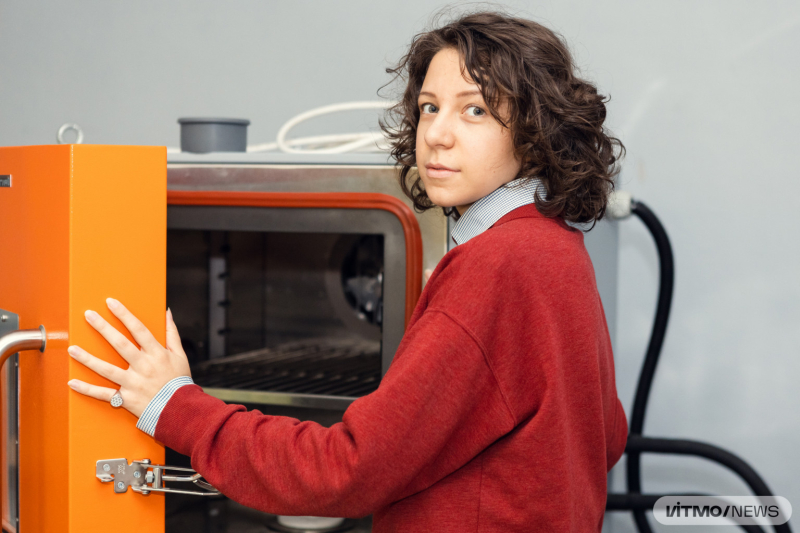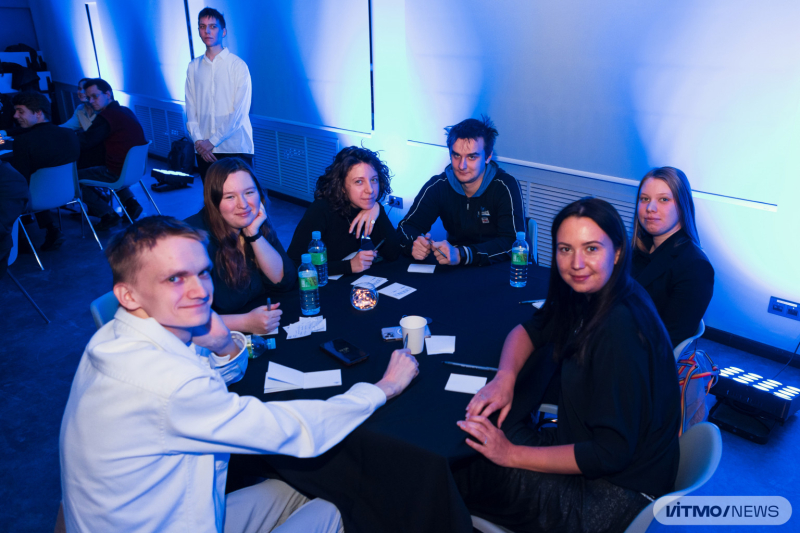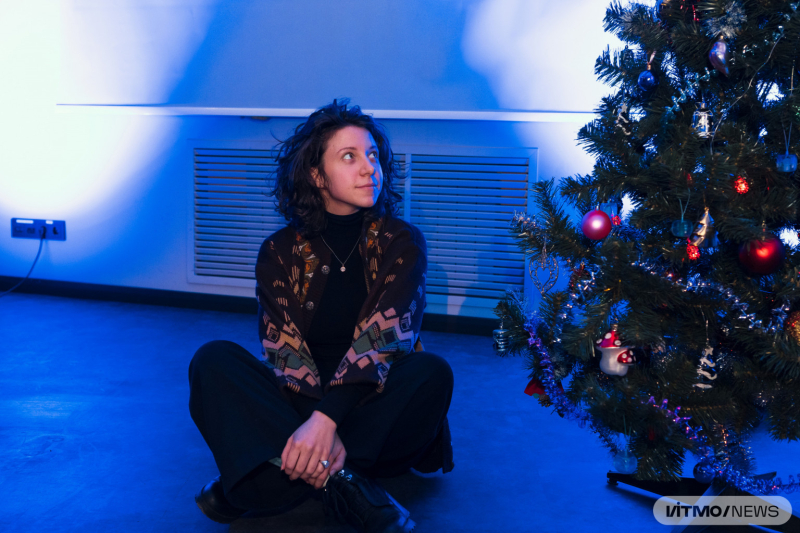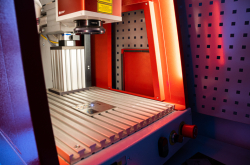Before entering a PhD program, you’d completed your Bachelor’s and Master’s at ITMO, both in photonics. How did you decide to settle on this particular field – and do it at ITMO?
As a school student, I found optics very aesthetically pleasing and wanted to get into a program connected with this field. My school specialized in math and physics, and during physics classes I particularly enjoyed working with glass that shone like the rainbow. I was also quite good at solving optics-related problems. My hope was that a career in optics would be not only useful, but also beautiful.
Besides, photonics sounds very mysterious, it’s almost like a unicorn. It’s the science of generation, transmission, propagation, and interaction of light in a medium. A unicorn’s horn is like a prism that absorbs and transforms light, giving the creature its rainbow colors. And rainbows, as well as the beautiful colors of dawns and sunsets, are something that we see in our daily lives – something that photonics can explain.
I visited an open day at ITMO and came out of it certain that the university was right for me. There are optics and photonics programs at other universities, of course, but ITMO approaches these fields from a broader range of perspectives. We don’t just solve theoretical equations; there’s also a lot of elbow grease involved, such as calibrating optical circuits for lab practice. There’s so much you can do, it’s exhilarating!
Moreover, here you can join different projects and studies, including some major ones. For instance, we are developing a high-precision fiber-optic gyroscope and quantum amplifiers for the Polar Express, a transarctic submarine fiber-optic communication line.
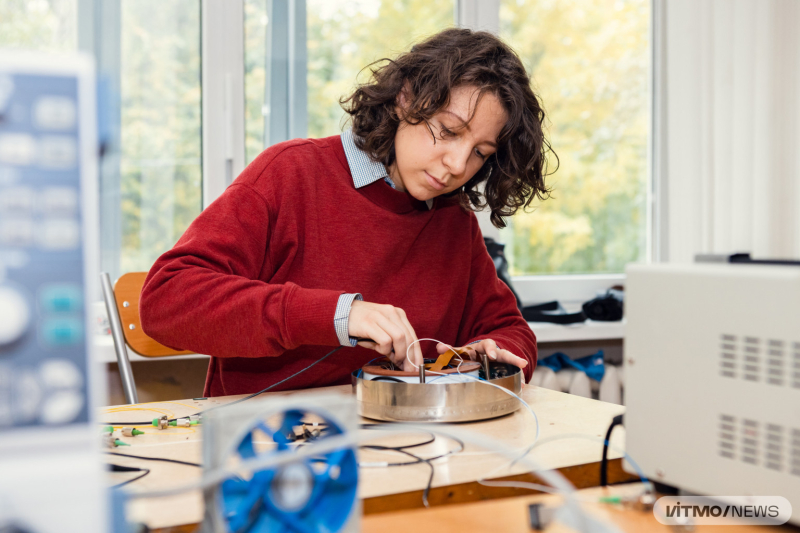
Ida Kublanova. Photo by Dmitry Grigoryev, ITMO.NEWS
What are your current projects?
I am updating the interferometric fiber-optic gyroscope at ITMO’s Research Center of Light-Guided Photonics. This device is used in navigation to measure angular velocity. As any other phase sensor, a gyroscope is highly sensitive to the slightest changes in the measured value. Unfortunately, many external factors can shift the phase. The gyroscope can be a great thermometer, but it’s hard to tell apart phase shifts caused by changes in temperature from those brought on by rotation. This creates noisy measurements.
One of the main sources of noise (amplitude-dependent or parasitic phase shifts) is an electro-optic modulator, a device that is meant to help us detect a phase shift caused by the gyroscope’s rotation. This device works through electric voltage it sends to electrodes, which change the refraction index of the waveguide that transmits the radiation. This affects the phase. If two waves are modulated differently, there is a phase lag between them – this is the effect of modulation. It’s important to control this process to avoid parasitic phase shifts mixing with the modulated ones.
This is the root of the problem because modulators are placed on a lithium niobate (LiNbO3) crystal substrate – this material enables the most efficient modulation; however, even lithium niobate demonstrates a number of parasitic effects. For instance, the pyroelectric (related to temperature changes) and piezoelectric (related to mechanical impact) effects don’t spread evenly on the crystal’s surface, thus creating an unknown parasitic phase shift. My main research objective is to improve the precision of measurements by minimizing the effect of external factors on phase shifts.
How do you approach this problem?
In the commonly used scheme suggested by Lefevre, the modulator is a part of a multifunctional integrated optical circuit. In this case, the modulator consists of two waveguides etched on a lithium niobate surface. This means that unevenly distributed surface effects have a different impact on waves and result in an unknown parasite phase shift. At the same time, it is important for the gyroscope that the waves have the same polarization before and after the modulator.
That’s why in our improved device we are using a birefringence modulator instead of a modulator with two waveguides. In this case, there are still two waves that are modulated, but they propagate in the same waveguide with different polarizations. In our design, one linearly polarized wave is separated into two waves with orthogonal linear polarizations by connecting fiber and a waveguide in a lithium niobate crystal. The fiber’s birefringence axes are at a 45° angle to the waveguide’s birefringence axes, which means that the radiation is split and projected onto two axes – a slow and a fast one – and then propagates along them.
After passing the modulator, radiation propagates down two branches. In the first one, the waves make a 90° turn so that the slow and the fast one switch places. Then, in both branches, the radiation passes through linear polarizers coupled with the slow axis. This means that the slow axis is propagating in one branch, while in the other there is the fast axis that was turned slow.
Finally, having passed the fiber-optic circuit, the radiation returns to the modulator. At this point, the part of the radiation that didn’t do a 90° turn performs it and propagates down the fast axis. This means that in the birefringence modulator, the radiation propagates down the slow and fast axes twice. After the modulator and because the radiation combines with a 45° turn of the axes, the radiation from both axes is projected onto two new axes. At this time, the linear polarizer coupled with the slow axes emits radiation that contains both waves with different electro-optical coefficients. This results in an effective modulating phase shift.
How are these measurements conducted and what are their applications?
Upon passing the modulator and a number of couples, connectors, and polarizers, light waves reach a sensitive element, a fiber-optic circuit, where waves propagate clockwise and counter-clockwise. This element works thanks to the Sagnac effect. If the circuit doesn’t rotate, both waves will pass the same path, with no information phase shift between them. However, if the circuit rotates, the waves will have to take different ways to reach a certain point in the circuit, which means that there will be an information phase shift between them. It will be proportional to the rotation velocity. With this method we can, for instance, determine the Earth’s rotation velocity at a given latitude.
This information comes in handy in navigation, when we need to identify the location of a reference point. For instance, there is no clear external reference point when sailing in the ocean – there is water all around you. A gyroscope measures the angle at which the ship turns, helping the ship’s captain stay on the right track.
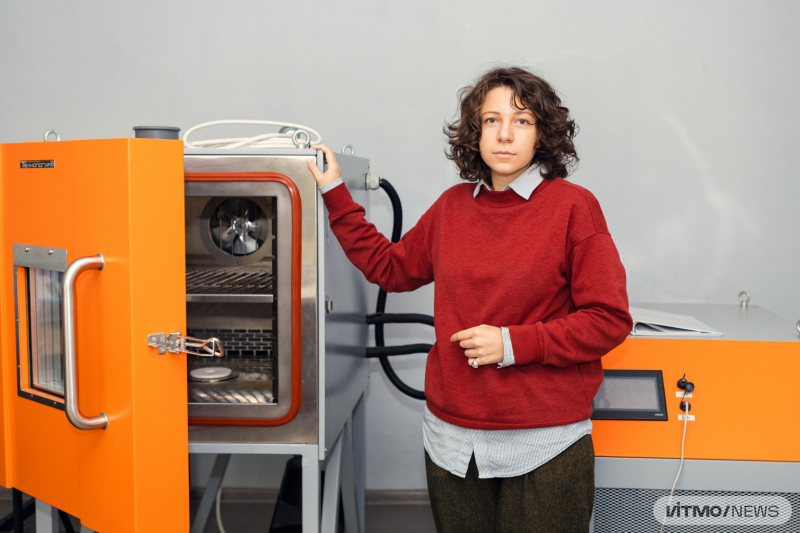
Ida Kublanova. Photo by Dmitry Grigoryev, ITMO.NEWS
Read also:
Ivan Deyneka on Being a PI and Designing High-Precision Sensors and Communication Networks
Paving the Way to Next-Gen Devices: Your Guide to Metaphotonics
How are you developing this idea?
We have already patented our gyroscope with my supervisor Andrey Kulikov, who is also head of ITMO’s Higher School of Engineering and Technology. Now, we are improving the prototype and conducting experiments in collaboration with CSRI Electropribor. For instance, we are testing the new device at different temperatures. In 2022, our research won second place in the national youth forum Science of the Future – Science of the Youth.
When you are not busy working or studying, you take part in What? Where? When? games – your team even entered the finals of ITMO’s first tournament. How did you first start playing? Do you think this experience benefits your work?
I started playing as a school student, when I was in seventh or eighth grade. Back then, we didn’t perform very well in interschool tournaments, but we did have a lot of fun. It’s exciting to be able to try and tackle questions from fields you don’t know anything about.
I don’t think it’s harder to captain the team than be a regular player, but it definitely is more fun. As a bonus, managing your team builds up your leadership skills and helps not to shy away from responsibility in life.
Many PhD students try their hands at teaching alongside their training. Have you considered this career for yourself?
I took part in ITMO.Mentors, but I don’t think of teaching as my primary activity. These days, I am involved in a popular science podcast for kids, where we explain such things as glassmaking, smart materials, and solar power in simple terms. After I complete my PhD, I am planning to continue doing research but also try my hand at other fields, for instance, ecology.
